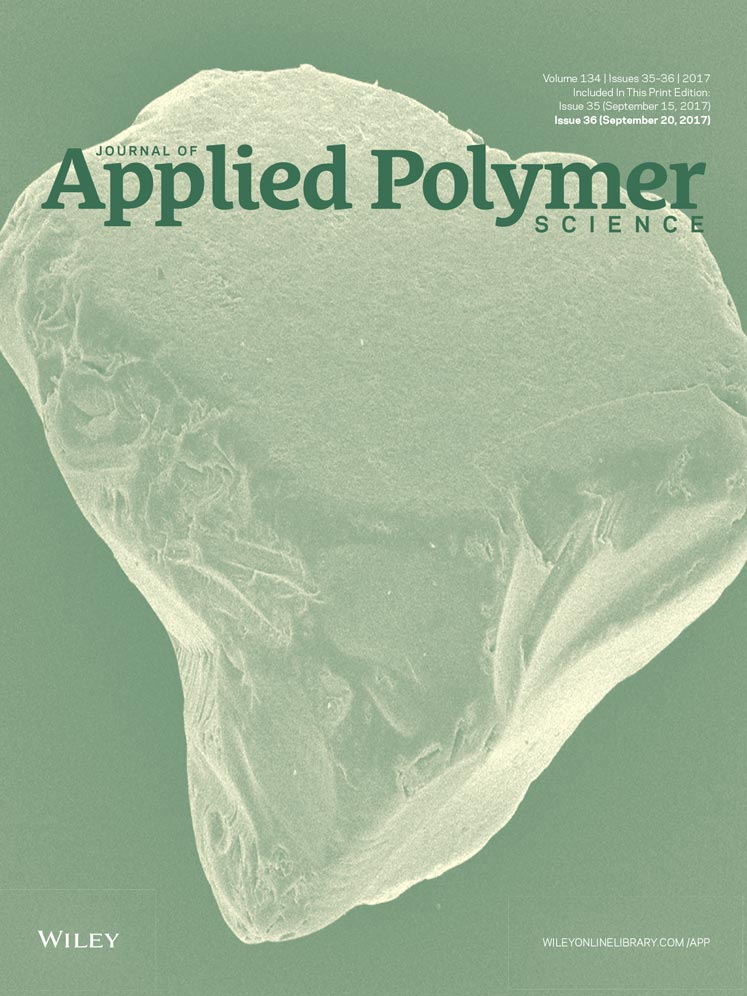RAFT-mediated graft polymerization of glycidyl methacrylate in emulsion from polyethylene/polypropylene initiated with γ-radiation
ABSTRACT
The successful reversible addition-fragmentation (RAFT)-mediated graft polymerization of glycidyl methacrylate (GMA) in emulsion phase from polyethylene/polypropylene nonwoven fabric using 4-cyano-4-[(phenylcarbonothioyl)thio]pentanoic acid under γ-irradiation at ambient condition is reported. While conventional graft polymerization in emulsion phase yielded grafted materials with low of grafting (Dg) values [<7.5% at 10% (wt/wt) GMA], addition of RAFT agent to the graft polymerization system allowed the synthesis of polyethylene/polypropylene-g-poly(GMA) with more tunable Dg (8% ≤ Dg ≤ 94%) by controlling the grafting parameters. Relatively good control (PDI ∼1.2 for selected grafting conditions) during polymerization was attained at 100:1 monomer-to-RAFT agent molar ratio. The number average molecular weight of free poly(glycidyl methacrylate) (PGMA) increased as a function of monomer conversion. NMR analyses of the free PGMA homopolymers indicate the presence of dithiobenzoate group from 4-cyano-4-((phenylcarbonothioyl)thio) pentanoic acid on the polymer chain. The reactive pendant oxirane group of the grafted GMA can be modified for various environmental and industrial applications. © 2017 Wiley Periodicals, Inc. J. Appl. Polym. Sci. 2017, 134, 45270.




